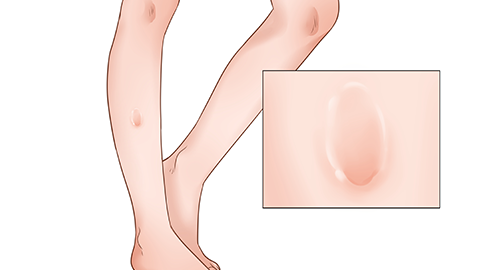What to do about blocked blood vessels in the legs
Generally, leg vascular blockage may be caused by prolonged sitting, obesity, lower extremity varicose veins, deep vein thrombosis of the lower extremities, atherosclerotic occlusive disease, and other related factors. Patients can visit a formal hospital to choose general treatment, medication, and other methods to improve the condition. Detailed analysis is as follows:
1. Prolonged Sitting
Maintaining a seated posture for extended periods reduces leg muscle activity and slows blood flow, making it prone to blood stagnation in leg vessels and causing blockages. It is recommended to get up and move every hour, such as walking or standing on tiptoes, to promote blood circulation through leg muscle contractions. While seated, you can also perform foot flexing exercises, repeating 10-15 times per session to assist blood return.
2. Obesity
Excessive weight increases the burden on leg vessels, and fat accumulation may compress the blood vessels, affecting blood circulation and causing vascular blockage. Adjust your diet by reducing high-calorie and high-fat foods, and consume more vegetables, fruits, and whole grains. At the same time, adhere to moderate exercise, such as brisk walking or swimming, to gradually reduce weight.

3. Lower Extremity Varicose Veins
Abnormal venous valve function hinders blood return, causing blood stasis in the veins, which can easily form blood clots leading to vascular blockage, often accompanied by leg soreness and bulging veins. Avoid prolonged standing or sitting, and elevate your legs while resting. Under a physician's guidance, medications such as Venoruton tablets, Diosmin tablets, or Hesperidin tablets can be used for treatment.
4. Deep Vein Thrombosis of the Lower Extremities
Increased blood viscosity or damage to the vein walls can easily lead to clot formation in the deep veins of the lower limbs, blocking the vessels and manifesting as leg swelling and pain. Prompt medical attention is required, and under a physician's guidance, medications such as low molecular weight heparin sodium injection, warfarin sodium tablets, or rivaroxaban tablets can be used for treatment. During treatment, avoid massaging the legs to prevent clot dislodgement.
5. Atherosclerotic Occlusive Disease
Atherosclerosis leads to narrowing and blockage of the vascular lumen, resulting in insufficient blood supply to the legs, with symptoms such as coldness in the legs and intermittent claudication. Under a physician's guidance, medications such as aspirin enteric-coated tablets, clopidogrel bisulfate tablets, or atorvastatin calcium tablets can be used for treatment. At the same time, strictly control blood pressure and blood sugar levels, and quit smoking and limit alcohol consumption.
In daily life, it is important to maintain moderate exercise and avoid prolonged standing or sitting; eat a light diet and reduce the intake of high-fat and high-salt foods; regularly check vascular health, and seek medical attention promptly if any leg abnormalities occur.








